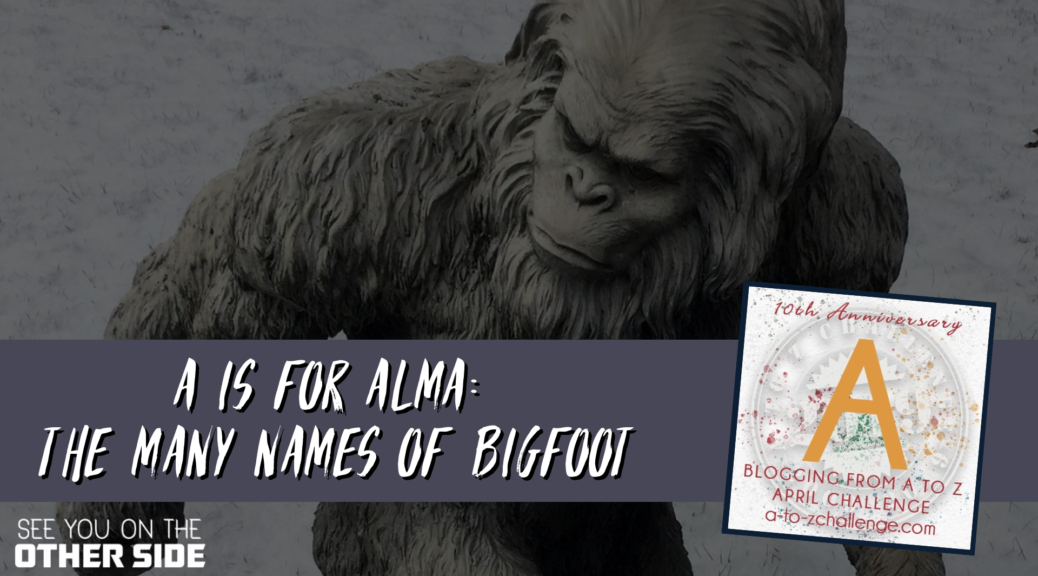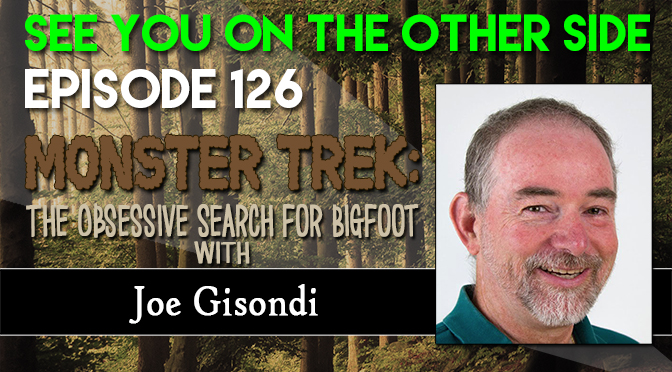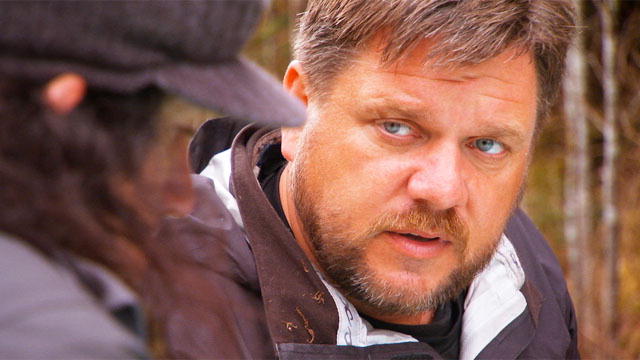You would have to be some kind of hermit to not have heard of the creature known as “Bigfoot”. A giant, hairy hominid, this alleged large-footed biped is most popularly said to roam the forests of the Pacific Northwest. But, that isn’t the only place the elusive cryptid also called Sasquatch is purported to roam. Not surprisingly, sightings of a tall, hairy giant abound around the world and even pervade popculture. And, just as there are multiple names for half-seen, noncorporeal beings said to haunt the living, Bigfoot is known by many other names, some based on the region, and others tied to the theories as to just what this being or creature may truly be…
Almas—The Mongolian word for “wild man”, Alma, the Alma/Almas is said to inhabit the Caucasus and Pamir Mountains of Central Asia, and the Altai Mountains of western Mongolia.
Barmanou—also known as the Barmanu or Baddmanus, this creature comes from the mountainous region of western Pakistan and is described as a primate with human and ape characteristics.
Bagwajiwinini—while Sasquatch might be the most familiar NAtive American names for Bigfoot, it is only one of many. In Ojibwe, the big man is call Bagwajiwinini (bug-wo-gee-wih-nih-nih), meaning wild man/natural man, or Misaabe: a really large being. Searching online, one can find a number of Native American names—enough to fill up a list all by themselves.
Cain, Brother of Abel—in the 1800s, a Mormon farmer claimed that while riding into town on horseback, he was approached by a Bigfoot that simply walked along beside him and struck up a conversation, revealing itself as Cain, the brother of Abel, cursed to walk the Earth for eternity in punishment for the Biblical slaying of his brother.
E.T. (Extraterrestrial)—while there’s probably no accounts of a Bigfoot trying to phone home, there are multiple accounts of Bigfoots in and around areas at the same time as UFO sightings. Some reports describe Bigfoots fleeing from orbs, or driving them away. These accounts have led to theories that the big man is not of this Earth, or maybe even of this dimension.
The Fouke Monster—also known as the Boggy Creek monster, this cryptid was made famous in 1972 with the release of the movie “The Legend of Boggy Creek”, which puts the creature in Southern Arkansas.
Gigantopithecus—believed to have lived in Asia as recently as 100,000 years ago, this extinct primate closely resembles (skeletally) the famous cryptid described around the world.
Grassman—One of the most surprising places to have Bigfoot sightings is the very-developed state of Ohio, where the Grassman has been reported on multiple occasions.
Harry (Henderson)—Portrayed by the late Kevin Peter Hall (who was also the Predator in two films), Harry, as his adopted family called him, was the titular character of the popular 1987 film Harry and the Hendersons, in which a family strikes a Bigfoot with their car, thinks he’s dead, and takes the body home as a trophy, only to find the lovable creature was merely knocked out.
Mapinguari—hailing from South America, this elusive cryptid is believed by some to be another incarnation of Bigfoot, while others tie the name to an extant giant sloth.
Nun Yunu Wi—for the Cherokee, Bigfoot is Nun Yunu Wi, “the stone man”, or Kecleh-Kudleh, hairy man.
Oh Mah—for the Hoopa Indians, the Oh Mah was the “Boss of the Woods”.
Orang-Mawas—a creature of Malaysian folklore, said to be 10 ft tall and covered in black fur, that feeds on fish and raids orchards. Also known as the Orang Dalam.
Patty—Made famous by the Patterson-Gimlin film of 1967, Patty received her name after it was determined the Bigfoot in the film was actually a female.
Roussimoff, André René—before he rose to international fame as the wrestler known as Andre the Giant, Andre Roussimoff also had a turn as “Bigfoot” in several episodes of the Six Million Dollar Man TV series in the 1970s. This particular Bigfoot was (in the show) not a cryptid, but a complicated android built by a marooned race of aliens who had crashed on Earth and used the cyborg to scare aware intruders from their hidden base. The character was so popular, Kenner added an action figure of it to their Bionic toyline.
Sasquatch—first used in 1920 by British Columbian school teacher J.W. Burns, this widely-known name for Bigfoot is based on the Halkomelem word sásq’ets, or “wild man.”
Skookum—among the Chinook of North America, there is the Skookum, or Evil Giant of the Woods.
Skunkape—the Myakka Skunkape, often simply referred to as the Skunkape, hails from Florida, North Carolina, and Arkansas, and gets its name from its appearance and the unpleasant odor reported to accompany it.
Woodwose—a lesser known, out-of-use name for Bigfoot in Europe was Woodwose, a common Middle English term, for a “hairy man”. In Old English, it was wudu-wāsa or wude-wāsa, which may mean an abandoned person or a forlorn person, and may come the German “Waise” and Dutch “wees” which both mean “orphan.”
Yeren—Chinese for Man-Monkey the Yeren is said to reside in the remote mountainous, forested regions of western Hubei.
Yeti—also known as the Abominable Snowman, the Yeti is hails from the region of Nepal and Tibet, and was popularized by explorers in the region in the nineteenth century.
Yowie—even the land Down Under is no stranger to Bigfoot, with the howling cryptid popularly referred to as a Yowie. It also has a variety of other local names, including: Ghindaring, Jurrawarra, Myngawin, Puttikan, Doolaga, Gulaga, Thoolagal, Yaroma, Noocoonah, Wawee, Pangkarlangu, Jimbra and Tjangara.
Author’s Note: This list is by no means all-inclusive, but is an overview of some of the more common names of Bigfoot. Readers who want to share another name for Bigfoot are encouraged to leave it in the comments below.




